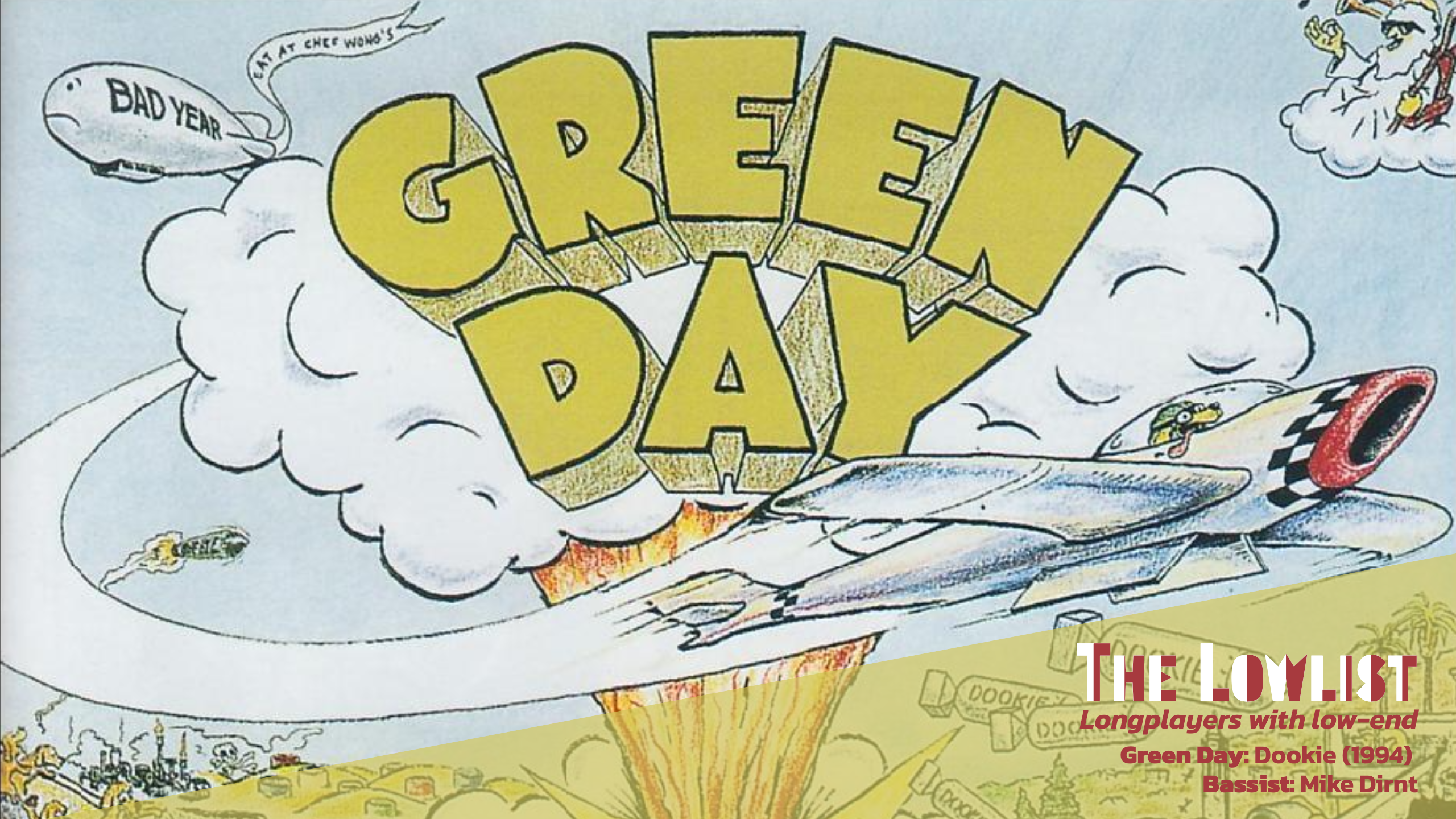Green Day's Mike Dirnt wrote the bassline for Longview on LSD: "Later, it took me a long time to be able to play it, but it made sense when I was on drugs"
In praise of Dookie, the 1994 album that put Green Day on the pop-punk throne

The original punk scene threw up some unique players back in the day, as more or less any music fan over 50 will tell you – Peter Hook, Paul Simonon, Glen Matlock, Jah Wobble and Jean-Jacques Burnel among them. Even poor, doomed Sid Vicious brought a certain macabre charisma to the music, plugged in or otherwise.
But maybe the ghost of Sid dogged punk bass playing for a while – encouraging this idea that punk bass players, at best, were just staying out of the way and holding down tight rhythms. Incredible players like Rancid’s Matt Freeman, Karl Alvarez of The Descendents/All, or Less Than Jake’s Roger Lima suggest otherwise.
Equally: Mike Dirnt, bassist with arguably the first and biggest pop-punk act, Green Day. He was born Mike Pritchard and is said to have got his stage name from his habit of playing air bass with a pick and muttering ‘dirnt, dirnt, dirnt’. Once up and running in the renowned power trio, forming a muscular rhythm section with drummer Tre Cool, he found a superb, scooped tone that cut clearly through guitarist Billie Joe Armstrong’s riffs.
A reasonable, if unlikely, comparison point for Dirnt’s big-bottomed, razor-edged sound is that of Duff McKagan of Guns N’Roses, also a player of punk stock, whose band was imploding around about the time that Green Day took off.
Still, if tone was all that Dirnt had to recommend his playing, he wouldn’t be in The Lowlist. No, Mike also threw in bass fills to die for across the instrument’s whole range, while always retaining a super-tight control of his playing that meant that his lines never interfered with the songs themselves.
Octave runs, upper-register pull-offs, slides, cheeky scales: the man pulled off the disturbingly mature feat of sounding like a pro and serving the music while also running about the fretboard like a madman. It was hardly a punk approach as we knew it back in the Seventies, but it was part and parcel of the new punk style, and for anyone who plays in a hard-driving band, it’s been a welcome evolution. Punk no longer has to mean primitive.
You can hear Dirnt at his best on Green Day’s breakthrough album Dookie – their first on major label Reprise – the album that became a rallying cry for a fresh batch of angsty suburban kids with a thing for very loud guitars and lyrics dripping with attitood.
Get The Pick Newsletter
All the latest guitar news, interviews, lessons, reviews, deals and more, direct to your inbox!
Dirnt told Rolling Stone that he was tripping on LSD when he came up with the bass line for Longview. “When Billie gave me a shuffle beat for Longview I was flying on acid so hard," he said. "I was laying up against the wall with my bass lying on my lap. It just came to me. I said, ‘Bill, check this out. Isn’t this the wackiest thing you’ve ever heard?’
"Later, it took me a long time to be able to play it, but it made sense when I was on drugs." People have been trying to get their heads and their fingers around it ever since.
Tracks like Basket Case and When I Come Around revived the raw energy of The Ramones and Buzzcocks along with the windmilling power chords of The Who, heaped high with sturdy hooks and coated with just enough gloss to make MTV adopt Green Day as post-grunge saviours. Californian punk was back, and they were leading the charge ahead of the likes of The Offspring and Rancid, for whom Armstrong had briefly served as second guitarist. Dookie went on to sell 10 million copies, hoovering up a Grammy in the process.
Nowadays Dirnt still delivers the goods via a huge-selling signature Fender Precision which you really should play if you ever get the chance. You don't even need to take acid to enjoy them.
Dookie is available to buy or stream.
“I asked him to get me four bass strings because I only had a $29 guitar from Sears”: Bootsy Collins is one of the all-time bass greats, but he started out on guitar. Here’s the sole reason why he switched
“I got that bass for $50 off this coke dealer. I don’t know what Jaco did to it, but he totally messed up the insides!” How Cro-Mags’ Harley Flanagan went from buying a Jaco Pastorius bass on the street to fronting one of hardcore’s most influential bands










